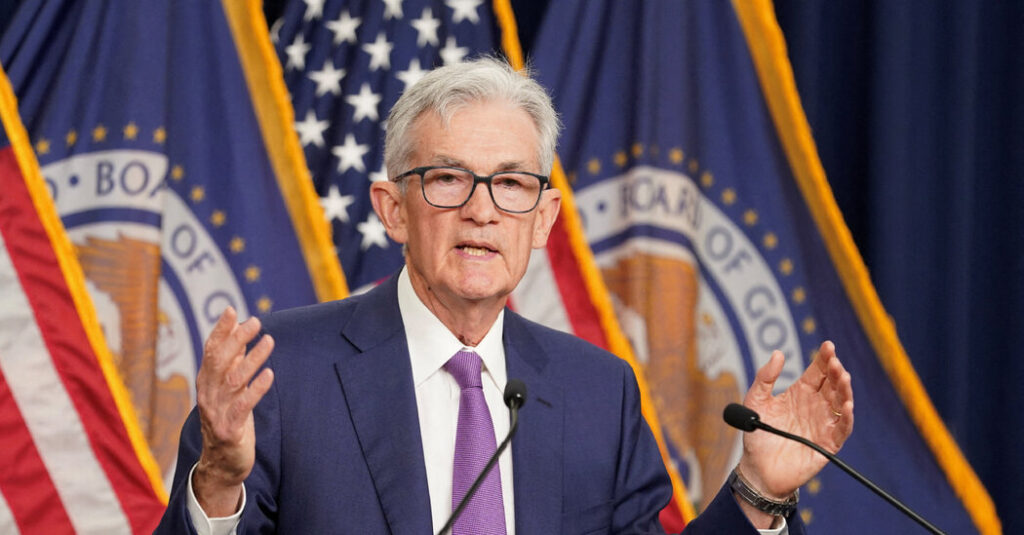Jerome H. Powell, the Federal Reserve chair, reiterated that policymakers were poised to hold interest rates steady at a high level as they waited for evidence that inflation is slowing further.
Fed officials entered 2024 expecting to make interest rate cuts, having lifted borrowing costs sharply to a more than two-decade high of 5.3 percent between 2022 and the middle of last year. But stubbornly rapid inflation in recent months has upended that plan.
Central bankers have been clear that rate cuts this year are still possible, but they have also signaled that they are planning to leave interest rates on hold for now as they wait to make sure that inflation is genuinely coming under control.
Speaking during a panel discussion in Amsterdam, Mr. Powell said that officials had been surprised by recent inflation readings. The Consumer Price Index inflation measure, which is set for release on Wednesday, came down rapidly in 2023 but has gotten stuck above 3 percent this year. The Fed’s preferred measure, the Personal Consumption Expenditures index, is slightly cooler, but it, too, remains well above the Fed’s 2 percent inflation goal.
“We did not expect this to be a smooth road, but these were higher than I think anybody expected,” Mr. Powell said on Tuesday of recent inflation readings. “What that has told us is that we will need to be patient and let restrictive policy do its work.”
Mr. Powell said that he expected continued growth and a strong labor market in the months ahead, and that he believed inflation would begin to slow again.
But, he said, “my confidence in that is not as high as it was, having seen these readings in the first three months of the year.”
The Fed chair made clear that further interest rates increases are not expected, though not impossible. He said that there was a “very small probability” that the Fed would need to entertain lifting again, but that he did not think that was the most likely outcome.
“It is really a question of keeping policy at the current rate for a longer time than had been thought,” Mr. Powell said. “The question is: Is it sufficiently restrictive, and I think that’s going to be a question that time will have to tell.”
The Fed chair said that he still expected rent, a major driver of the recent inflation, to eventually pull down price increases. But he acknowledged that the cool-down is taking longer than expected.
He also noted that it could be taking longer for policy to work this time around, in part because homeowners and businesses locked in very low interest rates when borrowing costs were at rock-bottom in the 2010s and in 2020.
“The U.S. economy is different this time,” Mr. Powell said.
Still, he said repeatedly that he thought interest rates were high enough to gradually weigh on growth and eventually bring inflation down the rest of the way.
“At the beginning, we were very concerned that the very high inflation we saw might be quite difficult to bring down without a very significant decline in employment and weakening economic activity — that didn’t happen, that’s just a great result,” Mr. Powell said.
Even though inflation has come down substantially from its highs in 2022, Americans are unhappy with the state of the economy, a fact that is clear in low consumer confidence levels. Mr. Powell attributed that dissatisfaction to continued high price levels.
Because inflation measures changes in price, slower inflation just means that prices are no longer going up as quickly, not that they are coming down after their rapid 2021 and 2022 run-up.
“You tell people: ‘Inflation is coming down,’ and they think ‘I don’t understand that,’” Mr. Powell said. “Particularly people at the lower end of the income spectrum are very hard-hit by inflation, from the start, which is why we’re so committed to restoring price stability and keeping it in place.”


